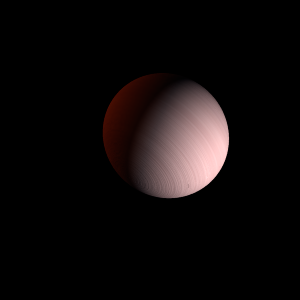|
|
Space Astro
|
Info for exoplanet "Casyco"
| Scientific (actual) data |
|---|
| Name | Kepler-23 c |
| Planet status | Confirmed |
| Planet mass | 2.7 |
| Radius | 0.285 |
| Orbital period | 10.7421 |
| Semi major axis | 0.099 |
| Orbit eccentricity | 0.02 |
| Discovered | 2011 |
| Updated | 2023-01-19 |
| Tconj | 2454970 |
| Tzero tr | 2454970 |
| Publication | Published in a refereed paper |
| Detection type | Primary Transit |
| Alternate names | 2MASS J19365254+4928452 c, GSC 03564-01806 c, K00168.01, KIC 11512246 c, KOI-168 c, KOI-168.01, WISE J193652.53+492845.3 c |
| Star name | Kepler-23 |
| Right ascension | 294.22° |
| Declination | 49.48° |
| Mag v | 14 |
| Mag j | 12.353 |
| Mag h | 12.047 |
| Star distance | 856.34 |
| Star mass | 1.11 |
| Star radius | 1.55 |
| Star temperature | 5828 |
| Star alternate names | 2MASS J19365254+4928452, GSC 03564-01806, KIC 11512246, KOI-168, WISE J193652.53+492845.3 |
| Wikipedia article | Kepler-23 c |
Back
| |
| Fictional info (?) |
|---|
| Suggested name | Casyco |
| Planet type | Large warm gas giant |
| Having almost no atmosphere to retain heat, it has surface temperatures that vary diurnally more than on any other planet in its solar system, ranging from 110°K (-163°C) at night to 665°K (392°C) during the day across the equatorial regions.
The outer atmosphere is visibly segregated into several bands at different latitudes, resulting in turbulence and storms along their interacting boundaries. |
| Atmosphere | Carbon monoxide | 54% |
| Sulfur dioxide | 30% |
| Argon | 13% |
| Nitrogen | 1.1% |
| Ammonium hydrosulfide (NH4SH) | 0.74% |
| Ethane | 0.26% |
| Atmospheric pressure | 40 bar |
 |
| Moon | Bian-ceae | Medium-sized almost round oceanic moon |
| Mnenaq-diron-an | Medium-sized slightly egg-shaped oceanic asteroid |
| Girthone Lirr | Medium-sized round oceanic planetoid |
| Thrymr-tania | Small irregular ice comet |
| Kegir Noeteus | Small round rocky planetoid |
| Auto-rhea | Large slightly egg-shaped crater-filled comet |
| Alna Bauti | Very small potato shaped rocky asteroid |
| Betay | Large irregular ice moon |
| Banher Anda | Small round oceanic moon |
| Aeauto-le | Huge irregular ice asteroid |
| Ariel Porie Ca | Large irregular ice moon |
| Tialassa Beti | Small round ice moon |
| Depal Rok | Medium-sized potato shaped crater-filled moon |
| Mathe Bemeti Ne | Small potato shaped rocky moon |
| Methoda Skoll | Huge irregular crater-filled asteroid |
| Kahyrneso Daphras | Medium-sized round rocky asteroid |
| Orix-onepina | Very small almost round crater-filled moon |
| Teasteph Hynis | Medium-sized almost round oceanic comet |
| Hytrin Oranan | Huge potato shaped crater-filled asteroid |
| Noelas'gete | Huge potato shaped rocky comet |
| Tonri | Medium-sized round crater-filled asteroid |
| Tekal Apus | Large almost round oceanic comet |
| Erelania'dita | Huge round crater-filled planetoid |
| Trieuan'liummir | Huge round gaseous asteroid |
| Attan | Small round rocky moon |
| Calthe Lypthi | Small irregular ice asteroid |
| Skamecres-mal | Very small potato shaped ice moon |
| Geiso Mipiji Na | Huge potato shaped ice planetoid |
| Onehali | Very small almost round oceanic moon |
| Google search for Casyco |
|
Website by Joachim Michaelis
|
|
|
|